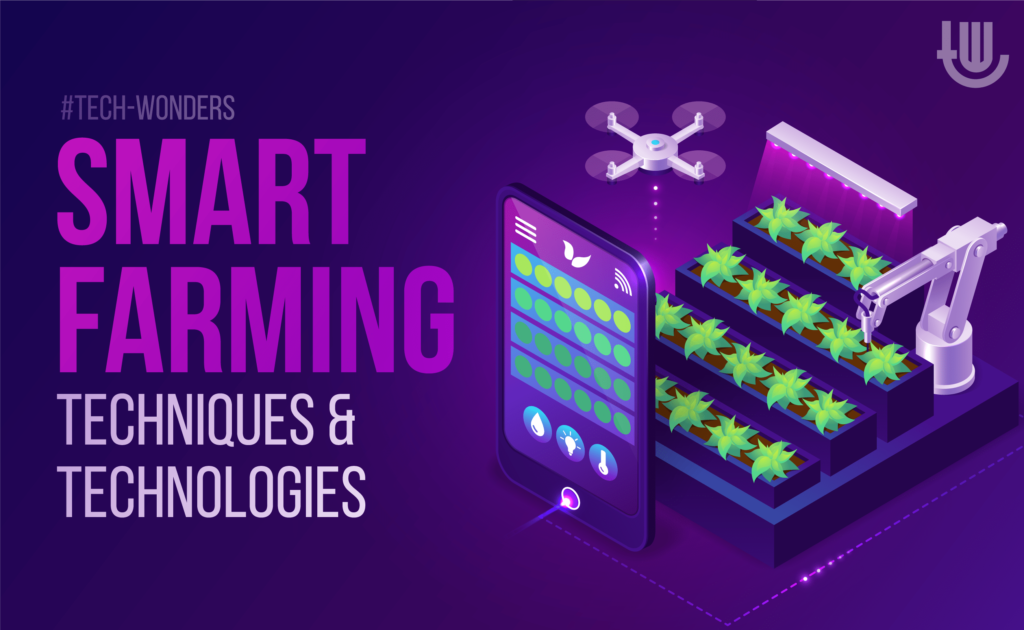
We can never get enough of thanking the constantly updating technology that has brought significant changes in every field possible. In the agricultural sector, these technologies are to analyze, predict, and yield better growth of the crops and at the same time make farming as effortless as possible. Fortunately, the introduction of technology in agriculture will ease the farmers’ lives and improve India’s status as a ‘Krushipradhan desh’. So this article is about the smart farming techniques and technologies worth adapting in India. Go ahead and take a deep dive to know more about it.
Smart Farming techniques and technologies worth adapting in India
Smart Farming is all about using technology such as sensors, robots, artificially intelligent machines, big data, and drones to help farmers make decisions based on analytics. Below are a few ideas already adapted or under deployment as we discuss the Indian agricultural scenario.
Cattle Management System
Herd health is as critical as plants, and an efficient cattle management system is a must. These systems use the health trackers to inspect the vital signs integrated with a veterinary alert. Such software ensures longevity in cattle and the enhanced quality of dairy products. The herd movement, health, and heart rates are tracked with a unique number tag with technologies such as Bluetooth and NFC. This drastically reduces the risk of human error and saves emergency cases that can potentially turn fatal.
Weather Prediction System
Who doesn’t need a comprehensive analysis of the weather for the ripe season? Farmers need moisture and temperature sensors for a successful yield. Historical logs, forecasts, and critical environmental conditions are essential to study the survival probability of the crops. Besides, farmers get to access this data from anywhere.
Nutrient Value of Soil Testing
Soil quality is essential to determine the growth of crops. Various DIY and commercial sensors are capable of telling the nutrient-based richness. These statistics can also further predict ideal crops to grow based on the weather and soil conditions over the region. Farmers are also alerted for low nutrient values, and necessary steps are recommended to overcome them.
Crop Health Management
Crop health is a critical element to notice for weeds and diseases. Besides, specific climatic conditions don’t prove to be conducive for the plant. We need multiple sensors to identify the current plant state and the factors influencing those. In emergency cases, these sensors can also forewarn the farmer to take prompt action. Image sensing devices tracking plants’ growth for future use and systems can also recommend ideal fertilizers for specific crops. Even drones are helpful in crop health management.
Farming Monitoring via Drones
Drones are capable of mapping out your farm area, providing analysis of the crops and land. It can also update the real-time soil nutrition status, temperature analysis, parasite manifestation of particular land areas, and many more. Based on this data transferred to the cloud, there can be intelligent suggestions made. Besides, for the mass spreading of chemicals and fertilizers, drones are always a go-to option.
Agricultural Robots
AI provides a new companion as robots with arms to detect unwanted weeds and parasites hosted on the crop. Besides, the robots can be effectively used to fertilize and water the crops, picking and transporting healthy crops. Besides low cost but highly accurate sensors result in increased efficiency. To add the cherry on the top, farmers can get these companions on a robot-as-a-service basis (rent).
Self Driving Tractors
Self-driving tractors consist of GPS systems, self-propelling mowers, and drones that guide vehicles across zones. It facilitates not only on-site logistics but also reduces operational tasks on farmers. John Deere has been one of the leading pioneers in manufacturing driverless tractors. Intelligent algorithms detect the shortest optimal routes, and cloud connectivity builds and classifies zones for studying.
Benefits of Smart Farming Techniques
Smart farming has a lot to offer other than the few benefits mentioned below. However, it’ll majorly change the lifestyle of the farmers and also prevent crop failures significantly.
- More excellent benefits on small investments. Various DIY methods can use the sensors to make a device, thus cutting market costs.
- Enables precision farming.
- Improved lifestyle as we mentioned above. Farmers can get to manage the machines rather than overworking themselves.
- Better crop and cattle health with timely updates and alerts can allow the farmer to sit back and relax.
- Storing previous logs of data to analyse the future scenarios and probabilities of crop survival in extreme cases.
Challenges of Smart Farming Techniques
While few of these ideas seem very exciting to implement, they come with many challenges as well. In India, the significant challenges that we think are,
- Machine failures can lead to erroneous data, which, if not predicted, can lead to miscalculated risks. Also, the collection of inaccurate data can lead to misleading analysis, which can be harmful.
- The affordability of specific devices can be beyond budget to the farmers. Especially robots, drones, and self-driven tractors.
- Machines do require time to time maintenance that can lead to fatal breakdowns if not appropriately treated. Also, maintenance comes with certain costs leading to heavy expenses.
- Farmers should be able to grasp the data analytics of the sensors and process them for accurate results. However, with appropriate training and experience, this issue can be solved.
Towards the conclusion
Using smart farming enhances not only sustainability but also reduces human efforts and errors. India has been gradually adopting smart agriculture, but to convert it ultimately might take some time. Moreover, these few techniques can lead to more prominent innovations for intelligence in farming.
If all of the above techniques are integrated into the software, it’ll be easier to access and grasp the happenings on the farm. India needs a combined software helping farmers to automate routine tasks unless human intervention is required.

Author Bio: This article has been written by Rishika Desai, B.Tech Computer Engineering graduate with 9.57 CGPA from Vishwakarma Institute of Information Technology (VIIT), Pune. Currently works as Threat Intelligence Researcher in CloudSEK. She is a good dancer, poet and a writer. Animal love engulfs her heart and content writing comprises her present. You can follow Rishika on Twitter at @ich_rish99.